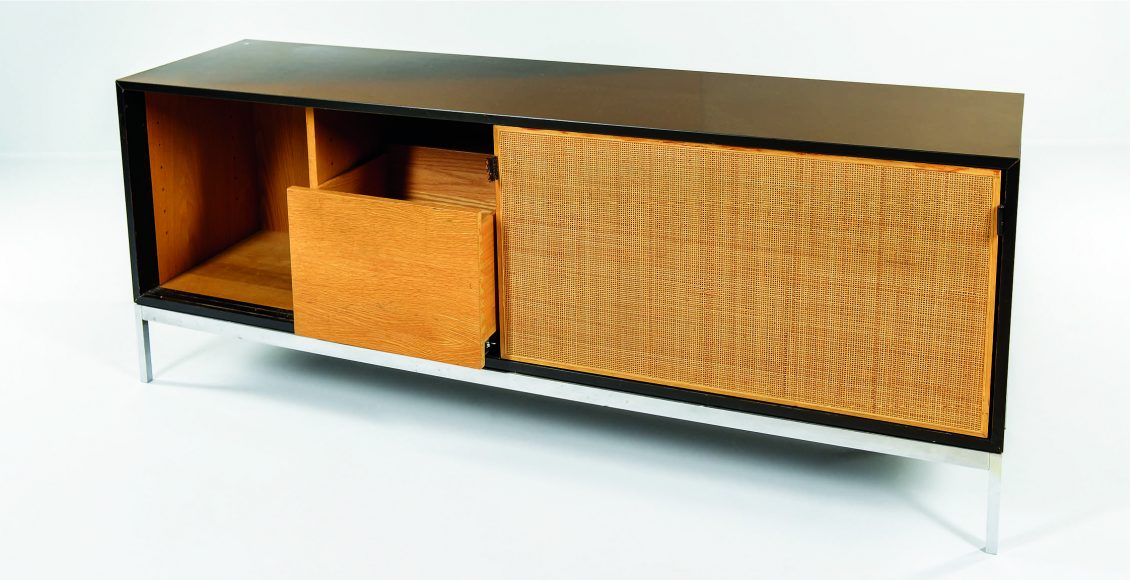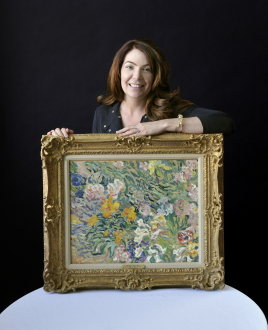It’s fair to say that Florence Knoll was the most influential figure in corporate interior design in America from the 1940s to the 1970s. The principles she championed created the efficient, open-plan, user-friendly environment that characterizes most office environments, and many homes, today.
Long before the term “holistic” became a buzzword, Knoll pioneered the concept of total design. She created environments that integrated architecture, furnishings, lighting and textiles. She herself designed many of the elements, especially furniture, that were needed to fulfill her concept of how an architectural space should function.
When Knoll died in January of this year, she left a legacy of functional beauty that has been called “humanized modernism.” The spaces she created grew out of a concern for logical problem solving: What is the best way to use limited square footage? How can architecture and furnishings be integrated in a seamless whole?
Knoll’s imaginative, superbly practical answers to design dilemmas were rooted in her widely varied and often unconventional life experiences. Born Florence Schust in Michigan in 1917, she was orphaned at 14. Starting at the progressive art-oriented Cranbrook schools, she furthered her formal education studying architecture at Columbia University, the Architectural Association in London and the Illinois Institute of Technology.
Along the way, she made friends with and learned from the leading figures of what is called today mid-century modern. Knoll was once a summer houseguest of architect Eero Saarinen and his wife in Finland, where Eero tutored her in architectural history. Mies van der Rohe was one of her professors and a lifelong influence on her approach to design. Marcel Breuer and Walter Gropius connected her to the Bauhaus movement.
Knoll’s primary interest throughout her long career was architecture. She rejected the label “interior decorator,” at that time primarily thought of as a genteel and barely serious occupation for socially connected women. Knoll described herself as an interior space planner, a professional specialist in creating a total workplace environment.
In 1941, she was working in the New York office of architectural firm Harrison & Abramovitz when she met a young furniture manufacturer named Hans Knoll. She persuaded Knoll that even in the difficult wartime economy he could expand his business by working with architectural firms and providing design services, as well as furniture, to clients.
Florence joined the Knoll Furniture Co. full time in 1943. She quickly established the innovative Knoll Planning Unit, the influential design service that transformed the American office from ponderous Victorian dark wood desks and tables to light-filled spaces with ergonomic task-oriented pieces.
One of her most influential innovations in the Planning Unit has become standard in the design field. The paste-up, as Knoll conceived it, was a flat plan of a proposed space that showed clients the proposed architectural space, renderings of the furniture and fixtures, and actual samples of the fabrics, woods and finishes that would be used.
Knoll Associates was a team effort on several levels; Florence married Hans in 1946 and became a full partner. The furniture designers worked closely with clients and architects to create the modern, efficient corporate spaces required by the booming post-World War II economy.
When Hans Knoll was killed in a car crash in 1955, Florence Knoll carried on as president and expanded the company’s success. It was an extraordinary accomplishment, especially in an era and in a field — industrial design — where women were rare.
Many of the iconic Knoll furniture designs were created by people Knoll knew from her Cranbrook days, including Harry Bertoia and Ralph Rapson. Van der Rohe, Jens Risom and Saarinen were among the many towering figures of the International modern style whose designs were produced by Knoll.
It is a tribute to Florence Knoll’s genius that many of Knoll’s sleek, geometric tables, desks, sofas, chairs and other seating pieces are still in production today. Vintage examples from her years at Knoll Associates bring premium prices.
Knoll’s comfortable, practical forms that combined spare lines with rich textures and colors was influential far beyond such famous corporate projects as the Connecticut General Life Insurance building in Bloomfield and the CBS headquarters in New York.
After her retirement from Knoll Associates in 1965, she worked with many private clients and had the satisfaction of seeing her designs and design philosophy adopted nationwide in private homes as well as public places.
For more, contact Katie at kwhittle@skinnerinc.com or call 212-787-1114. And visit Skinnerinc.com to explore available 20th-century design.


